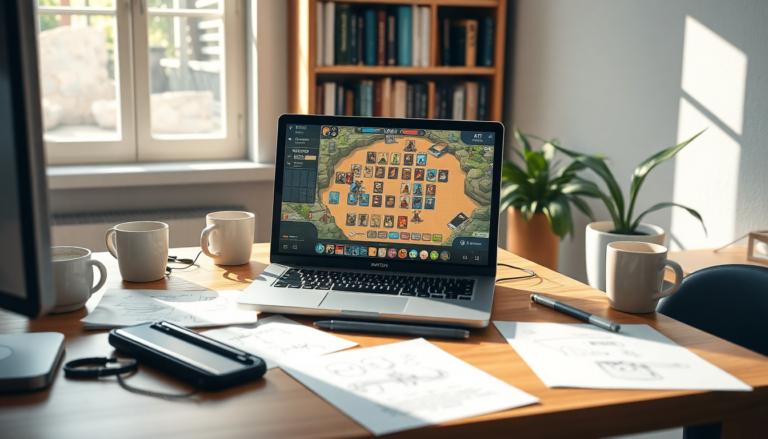Argomenti trattati
In the world of game development, blending traditional gameplay mechanics with modern aesthetics can create some truly captivating experiences. Imagine crafting a battle screen that feels like a card game while still showcasing those classic sideview sprites. Sounds intriguing, right? This approach not only enhances player engagement but also offers a visually appealing interface. In this article, we’ll dive into the design process, tackle potential challenges, and explore practical solutions to make this integration work seamlessly.
Understanding the Basics of Card Game Interfaces
So, what does it mean to infuse a card game mechanic into an RPG framework? It’s all about offering players a fresh way to engage. Typically, card games revolve around strategic decision-making, where players choose cards to execute actions like attacks or defenses. On the flip side, RPGs often showcase visual representations of characters through sprites, helping players connect with their avatars on a deeper level. To merge these two elements, careful design is essential—one that keeps functionality intact while boosting visual appeal.
A key component of this design is the layout of the cards. In many games, you’ll find cards positioned at the bottom of the screen. This setup allows players to make choices without blocking the action, keeping the interface uncluttered and the focus on available options. By designing larger cards, you can pack in more information about each choice, ultimately enhancing the user experience.
Implementing the Design in RPG Maker
RPG Maker MV and MZ have become go-to platforms for indie game developers, offering a wealth of plugins and tools for gameplay customization. If you’re looking to create a card-based battle system that showcases visible sprites, you’ll want to explore existing plugins or think about custom JavaScript solutions. While some plugins might facilitate card combat systems, they may not provide the specific functionality you’re aiming for.
For those ready to dive into JavaScript, crafting a custom script to tweak the default battle interface is an exciting option. This involves reprogramming the command window to display cards instead of the usual skill list, allowing players to select their actions more naturally. Just a heads up, though—this approach requires a strong grasp of both JavaScript and the RPG Maker engine.
Challenges and Solutions
While the idea of merging card mechanics with sideview sprites is exhilarating, it’s not without its hurdles. One common challenge is making sure the card selection process feels intuitive and doesn’t disrupt the flow of battle. To tackle this, consider adding visual cues or animations that guide players through their choices. Doesn’t that sound like a smart way to enhance the experience?
Another obstacle is striking the right balance between aesthetic charm and functional clarity. A cluttered interface can confuse players, which is definitely not what you want. To avoid this pitfall, aim for a minimalistic design that highlights key elements. Think contrasting colors and clear typography—these choices ensure players can easily read card information while remaining engaged with the action unfolding on screen.
Looking Ahead: Future Trends in Game Design
As game development continues to evolve, the fusion of diverse gameplay mechanics will likely become a standard practice. The combination of card-based systems with traditional RPG elements is just one way developers can boost player engagement and create unforgettable experiences. By keeping an eye on emerging trends and technologies, you can stay ahead of the curve and refine your game’s design.
In conclusion, designing a battle screen that mimics a card game while displaying sideview sprites is a challenging yet rewarding task. With careful planning, a good understanding of your tools, and a keen focus on user experience, you can create a unique interface that resonates with players and elevates your game’s overall appeal. Ready to take the plunge? Happy developing!

